A Candidate Conservation Agreement (CCA) was finalized in 2015 for the undescribed Sicklefin Redhorse, Moxostoma sp., and was signed by primary partners: U.S. Fish & Wildlife Service (USFWS), North Carolina Wildlife Resources Commission (NWRC), Duke Energy, Tennessee Valley Authority, Eastern Band Cherokee Indians, and Georgia Department of Natural Resources. The CCA is a formal agreement to cooperate on actions that conserve, manage, and improve Sicklefin Redhorse populations range-wide with the goal of working to preclude the need to list the species under the Endangered Species Act. The agreement formalizes and expands upon conservation efforts previously established by the NCWRC and partners.
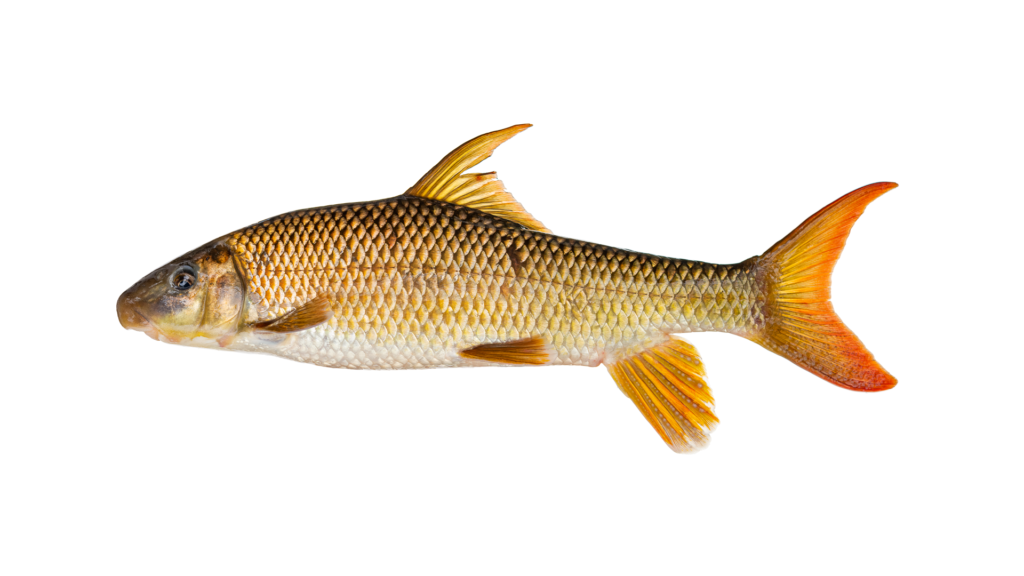
As part of this agreement, biologists have been involved in annual sampling efforts in the Hiwassee and Little Tennessee River basins each Spring. Sicklefin Redhorse, like many redhorse species in western North Carolina (WNC), can only be collected in high numbers during its Spring spawning run. During this spawning run, males and females congregate in shallow, swift riffles and shoals. This brief spawning period is temperature dependent, so biologists must time their sampling efforts just right to be able to collect them while they are congregating.
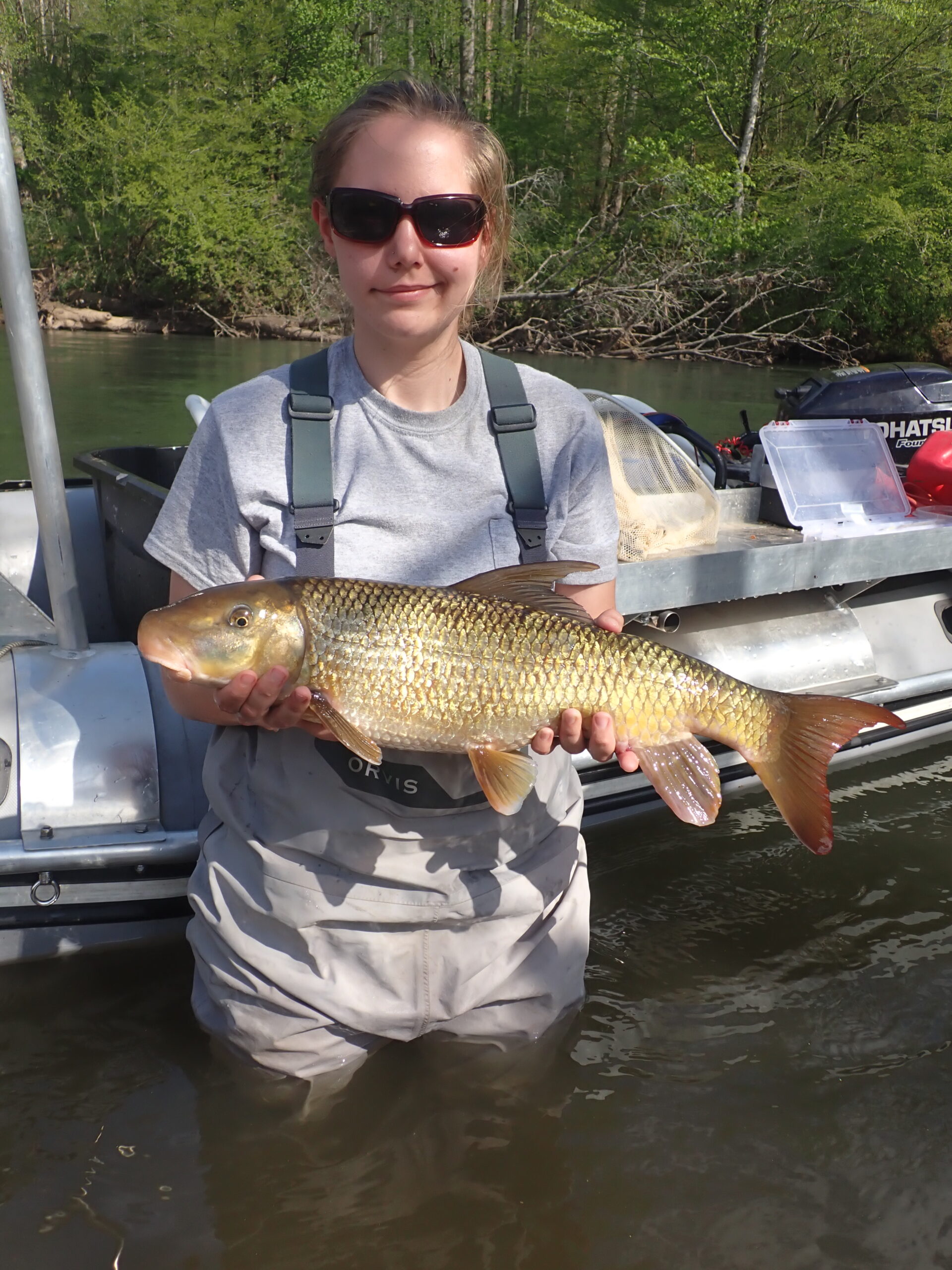
In 2021, NCWRC biologists targeted Sicklefin Redhorse in the Oconaluftee, Tuckasegee, and Little Tennessee rivers to collect milt and eggs for future stocking efforts and collect information about the species movement, reproduction, and survival. The Oconaluftee, Tuckasegee, and Little Tennessee River sampling resulted in the capture of 99 Sicklefin Redhorse.
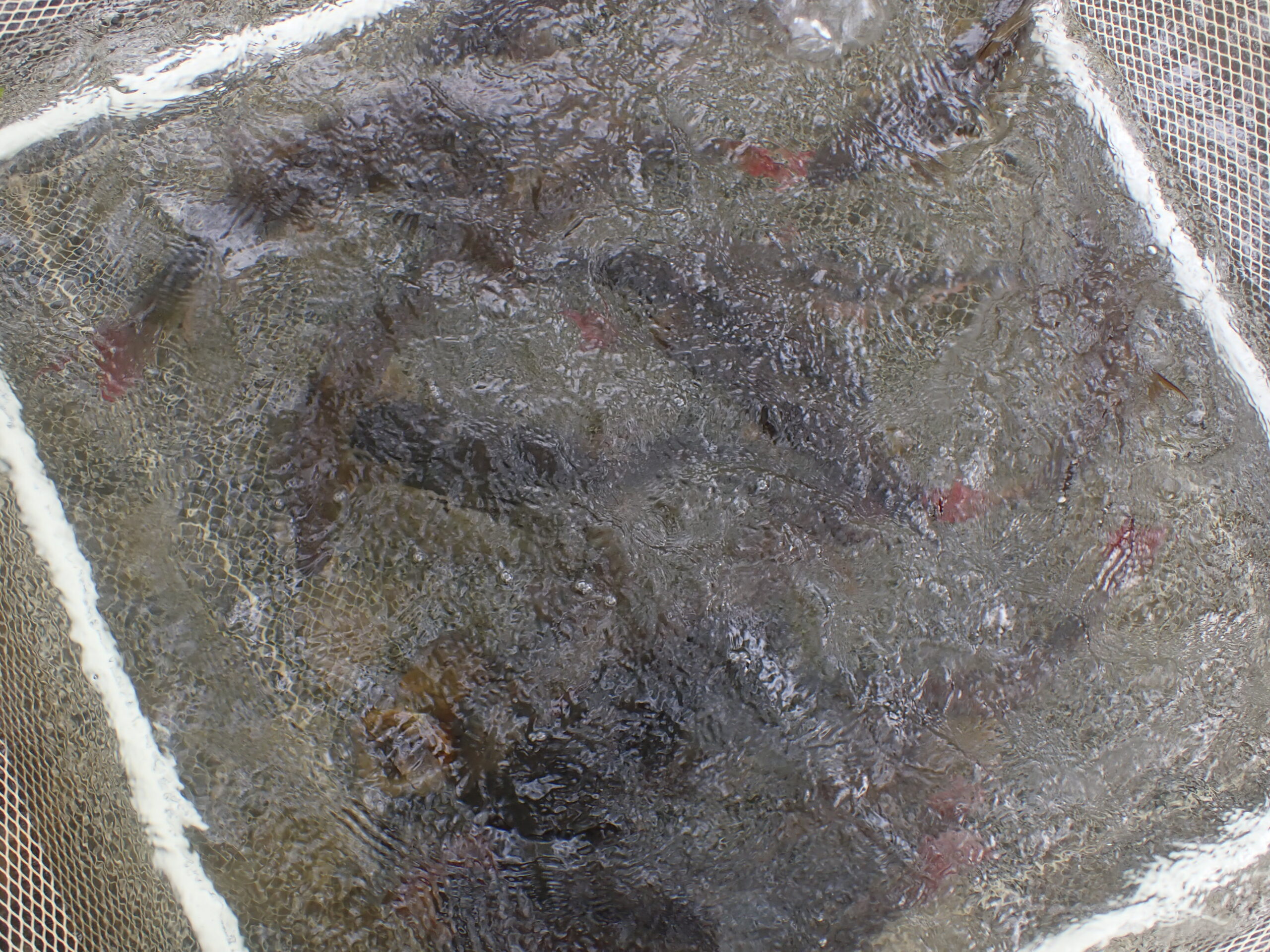
The Little Tennessee River was the most productive site, and biologists collected an estimated 30,000 eggs from just five females. The eggs were fertilized on site before being transported to Warm Springs National Fish Hatchery in Georgia.
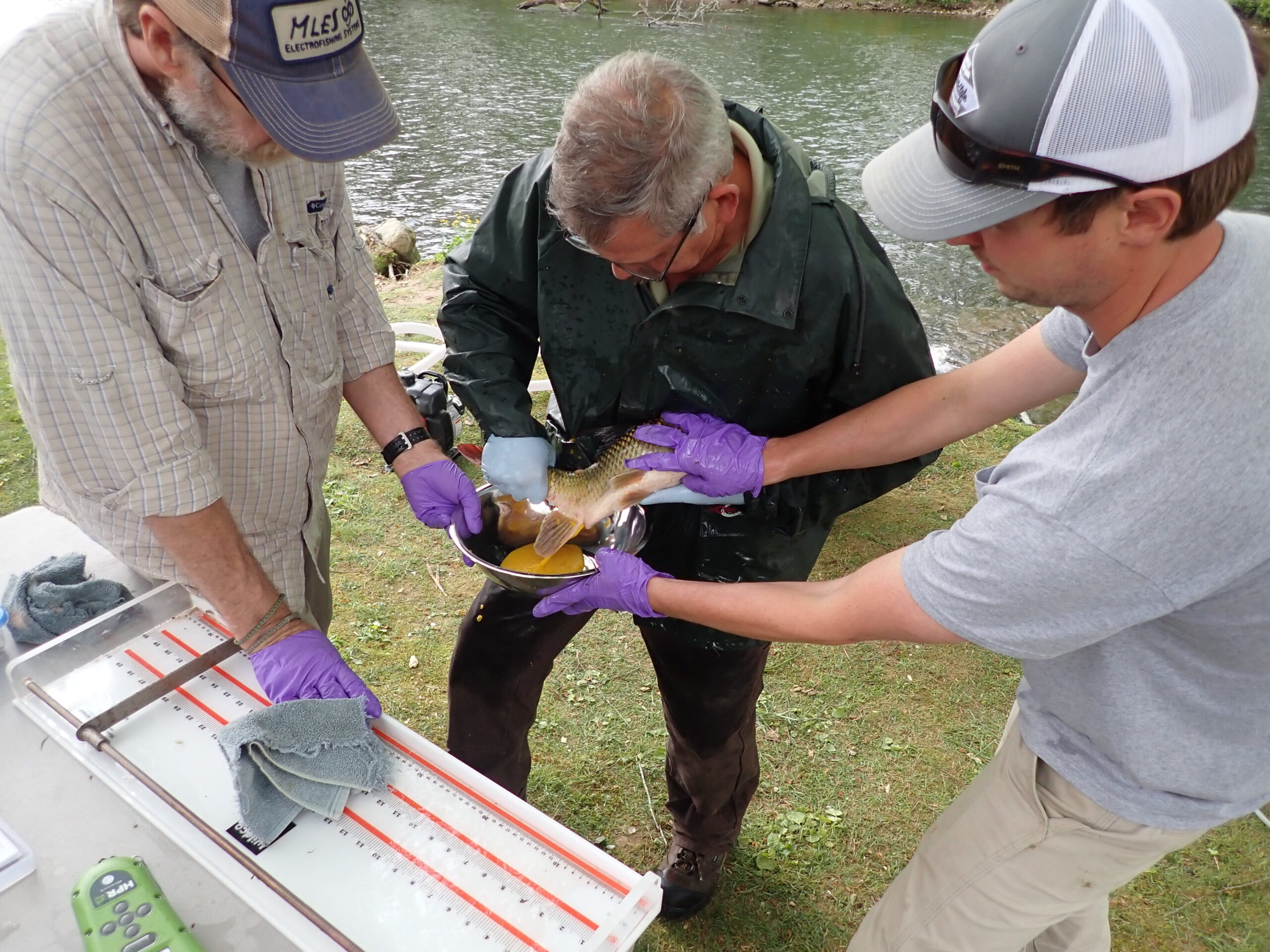
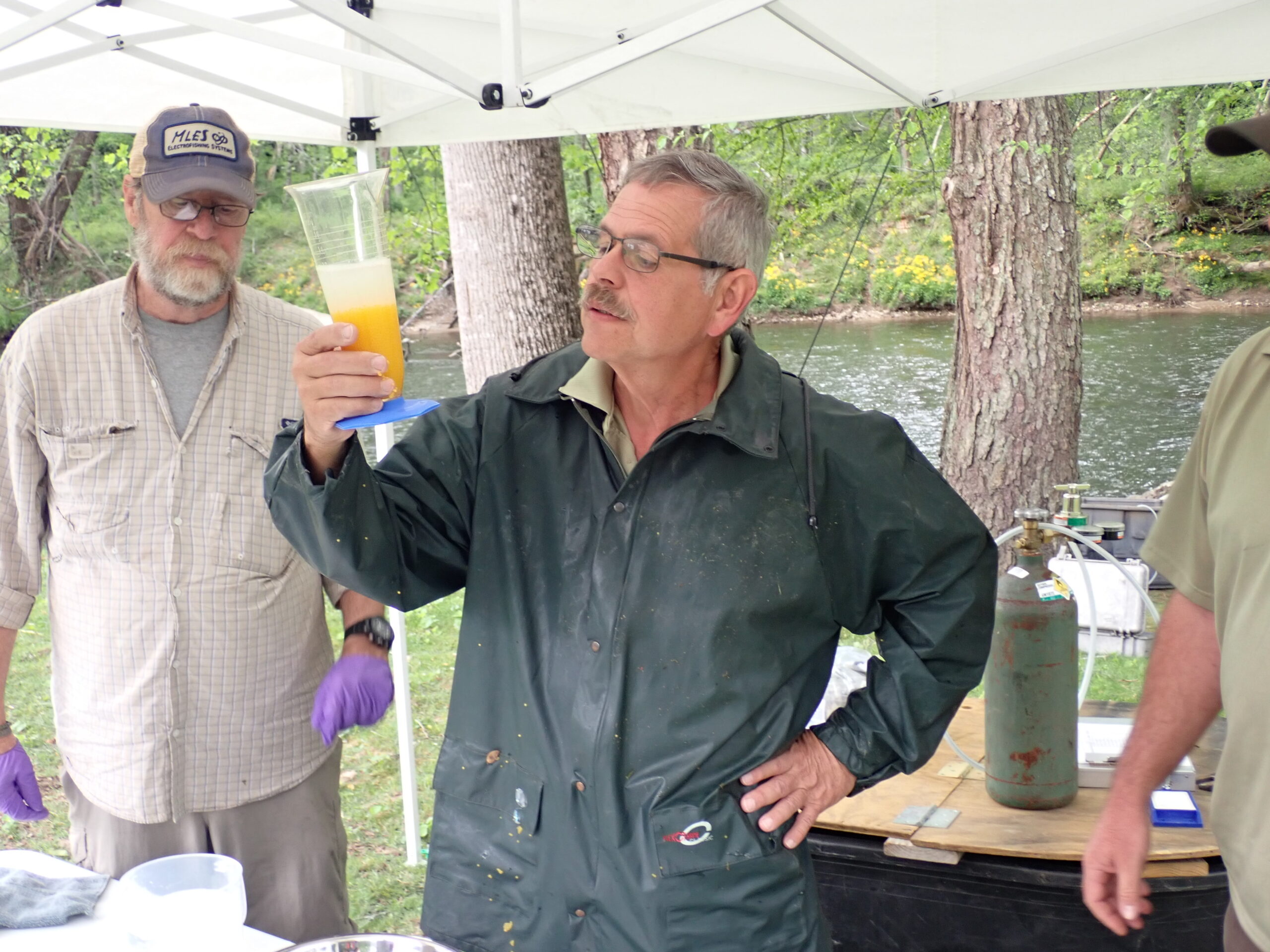
After hatching, the propagated Sicklefin Redhorse are grown out until they are ready to be restocked back into North Carolina’s waters. On September 10th, more than 13,000 juvenile Sicklefin Redhorse were stocked in Cartoogechaye Creek, Tuckasegee River, and Caney Fork. Dams on the Tuckasegee and Little Tennessee rivers prevent these sites from recovering naturally from their downstream populations.
Biologists are also conducting a long-term mark/recapture study, which requires each fish to be implanted with a unique Passive Integrated Transponder (PIT) tag. This monitoring effort provides additional insights into some of the Sicklefin Redhorse’s basic biology such as population size, movement patterns, and lifespan. Nearly one-fifth of the fish captured in 2021 had been caught and tagged in previous years, including two fish that were originally captured in 2012.